Each DIYnamics Kit is centered around a rotating tank of water that models the fundamental fluid dynamics of planetary fluid bodies. Hands-on demonstrations help audiences develop an intuition behind the forces responsible for our (or other) planet’s weather, ocean currents and more! After experiments, the tank is filled with water dyed by food coloring or other additives for visualization. The tank must be drained to perform further experiments or for storage.
Manually draining the tank with a cup or hand operated siphon drump pump is a straightforward option with minimal equipment required. However, for larger systems like the DJ Table and HT3 Table, manual draining may be impractical given time constraints. To this end, an electric utility pump is useful for automatically draining the tank.
Here we provide a guide on operating a utility pump. These devices are powered by wall power, can be fully submerged in water and are designed for situations such as draining a pool. Utility pumps provide a convenient and quick solution for draining your tank!

Step 1: Gather required materials:
- Utility Pump
- Hose
- Bucket
- Sponge
- Towel
Note that the utility pump used in this guide can be found here. Both options — Superior Pump and Everbilt — are suitable for draining a tank. Follow instructions for the utility pump you use. Ensure that the utility pump and hose you use are compatible — the thread size of the utility pump water outlet and hose end must match. If not, adapters are available to convert the utility pump water outlet to an appropriate thread size.
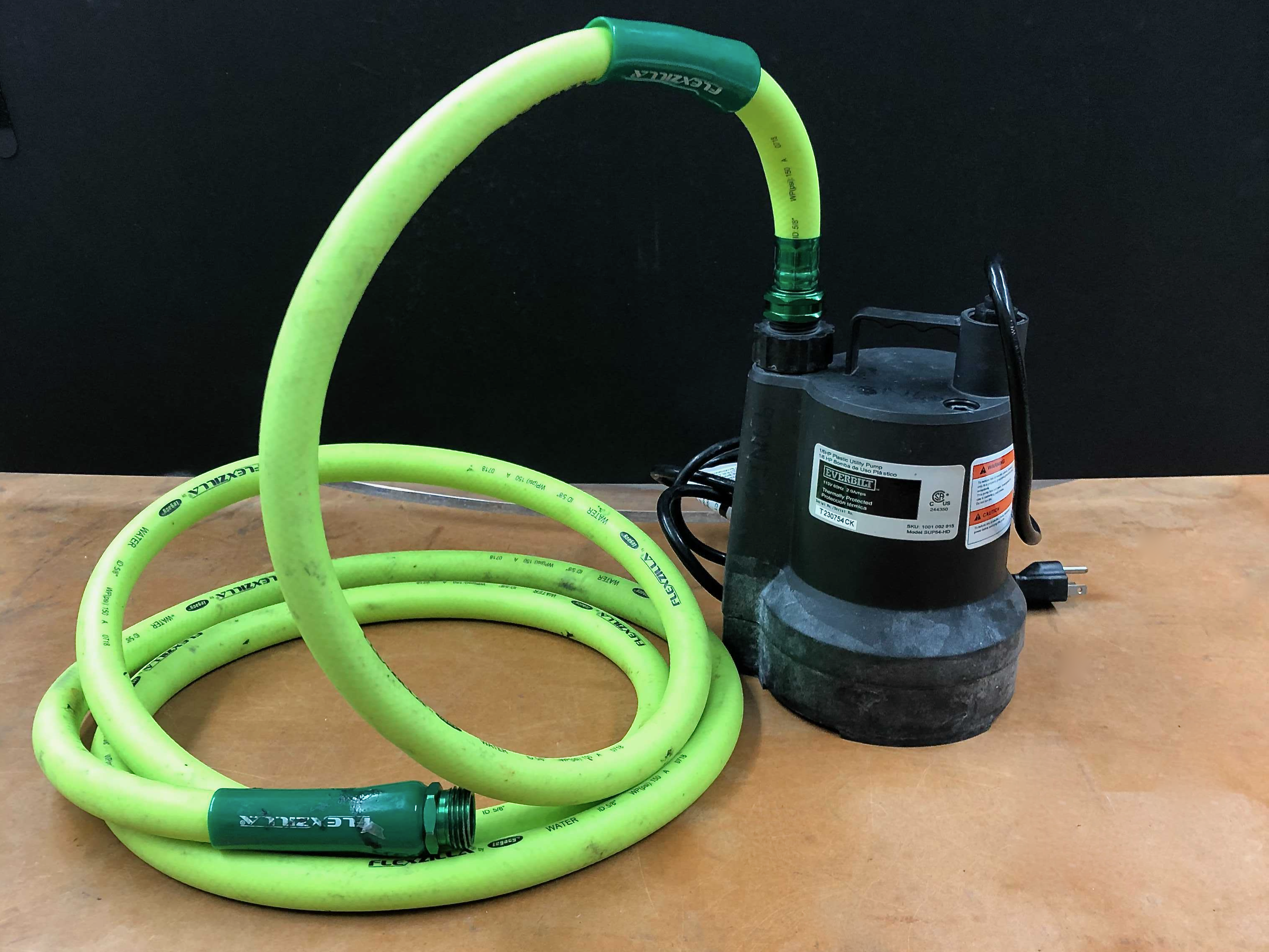
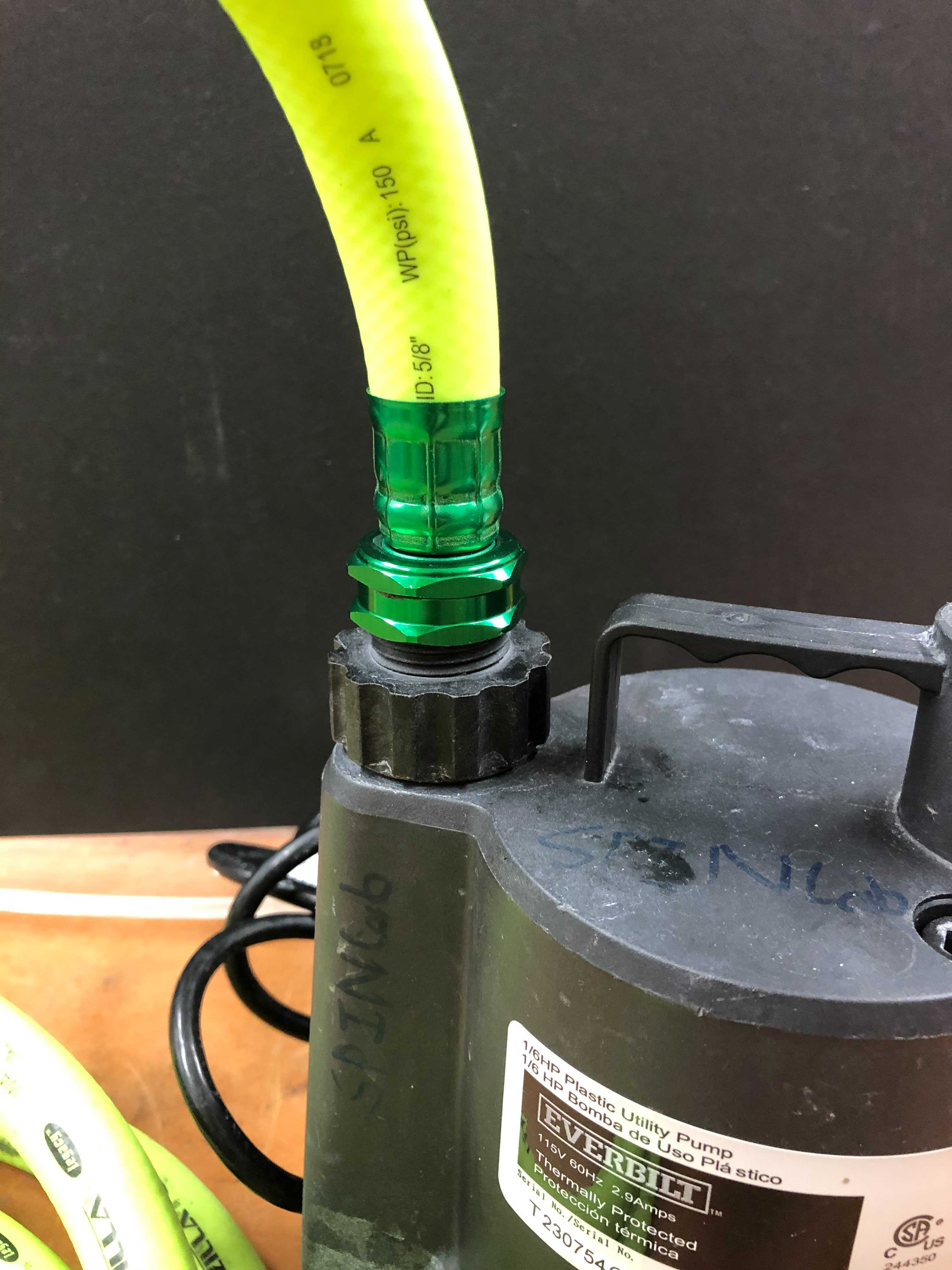
Step 2: Attach a hose end to the utility pump’s water outlet. The utility pump features a threaded water outlet at its top to output draining water — screw the hose end onto the interface.
Tip: Make sure that the hose end is screwed tightly onto the utility pump water outlet else water will leak during operation.
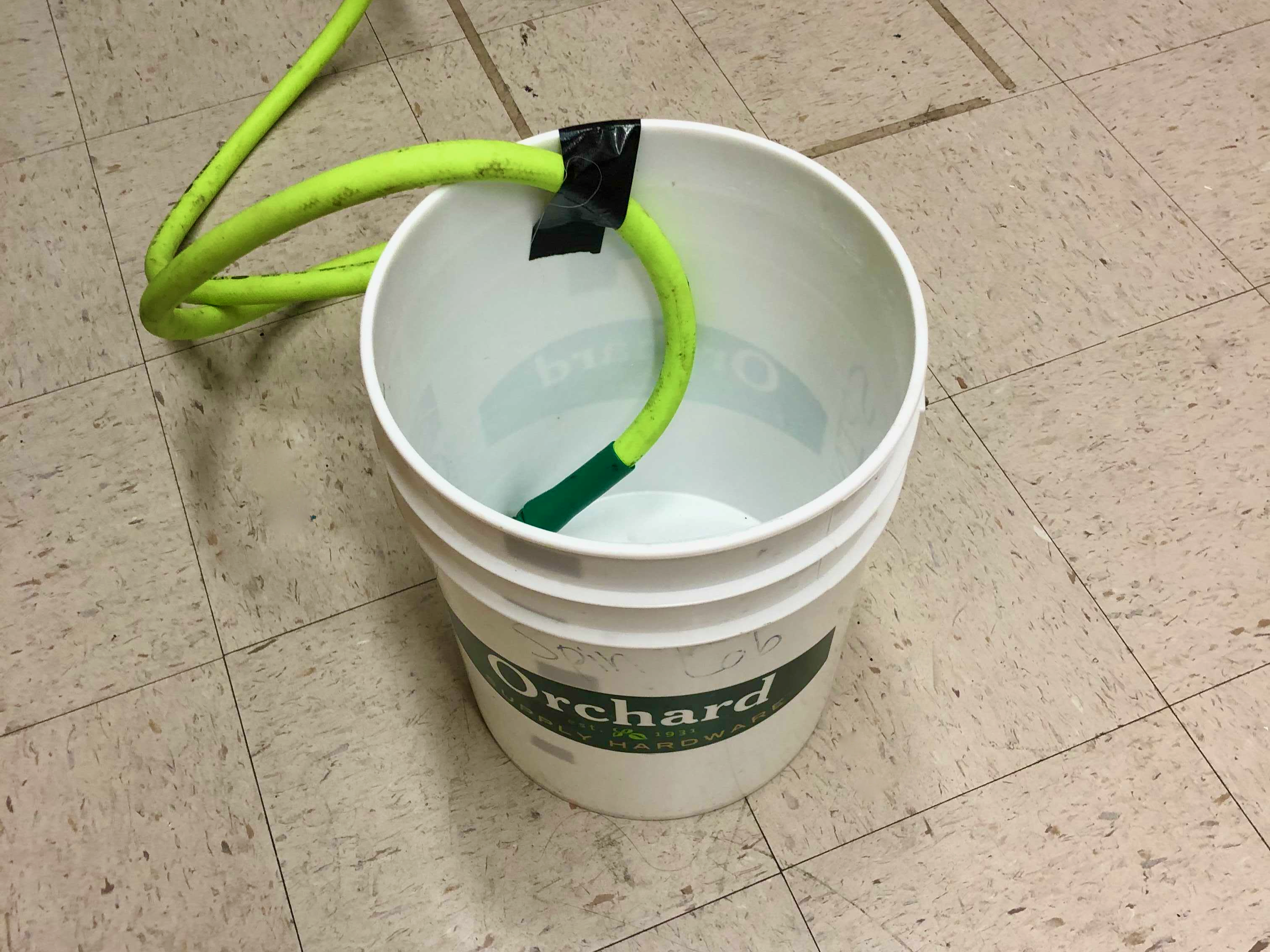
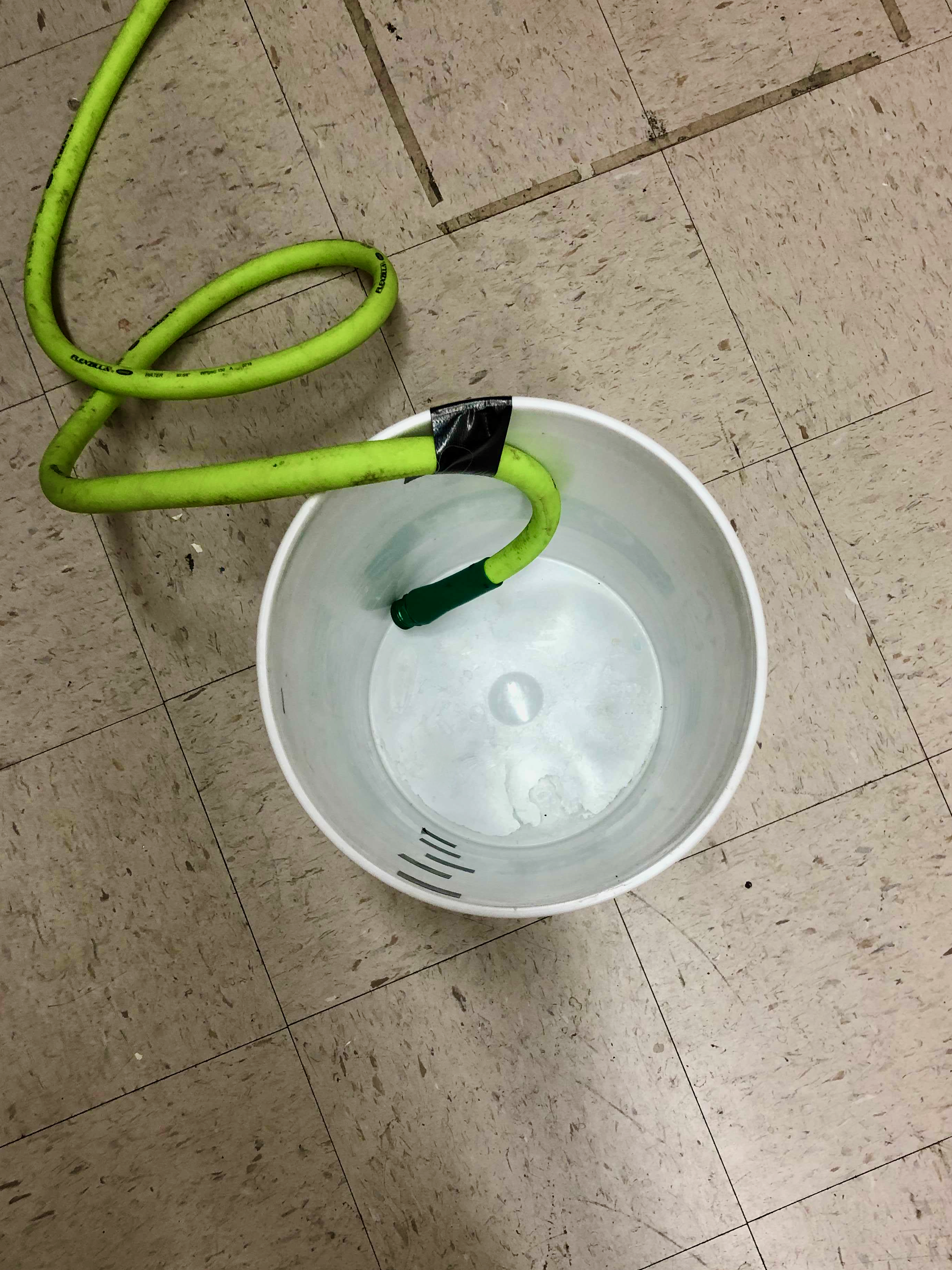
Step 3: Place the other hose end into the bucket to collect draining water.
Tip: The utility pump’s water pressure will likely cause the hose to shift during operation. To prevent spills, ensure that the hose is fixed firmly in place in the bucket by feeding the hose end to the bottom of the bucket and using tape to secure.

Step 4: Place the utility pump with hose in the tank in preparation for draining water. The bottom of the utility pump must lie flat on the bottom of the tank for water to drain effectively. Note that the utility pump is currently unplugged — it will immediately begin running once plugged. Note that the other hose end is out of the bucket in this picture but will eventually drain water into the bucket.

Step 5: Once you are ready (the utility pump is in the tank attached to a hose draining water into the bucket), plug the utility pump into an electrical outlet to begin draining water. The utility pump will continue draining water until unplugged. Use a GFCI electrical outlet for safety. If one is not available, plug-in GFCIs can be purchased.
Disclaimer: Be careful with operations involving wall power and water in close proximity. The GFCI halts power in the event of a fault and is a vital safety measure in situations involving water and electricity.
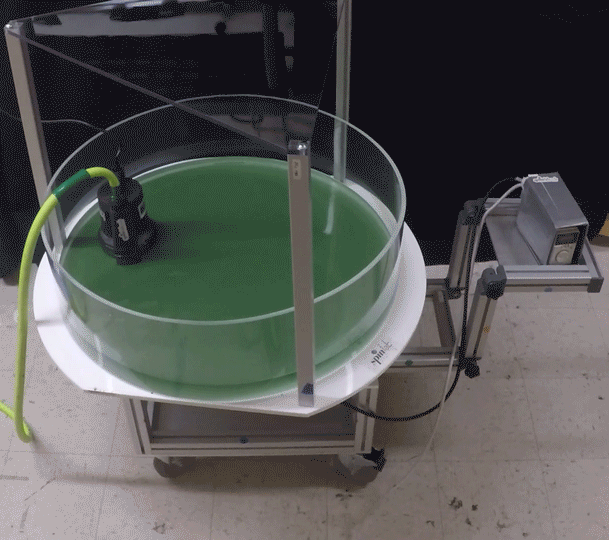
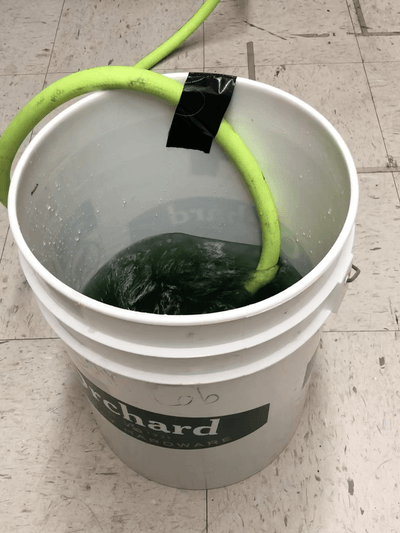
The utility pump will quickly drain water from the tank. Stop running once you observe that the tank’s water level is low and unchanging — the utility pump cannot drain water below a certain height. Monitor the water as it drains into the bucket. Be prepared to account for any spills or to switch or empty the bucket if it becomes full.

Step 6: Remove the utility pump with hose from the tank. Sponges and towels can be used to soak up any remaining water in the tank.
Tip: Water remains in the utility pump and hose. Let the utility pump and hose empty and dry in a bucket or sink to prevent spills.
The tank is now drained and ready for future experiments!
If you have any feedback, please feel free to share with us via email at diynamicsteam@gmail.com or Twitter at @DIYnamicsTeam.
